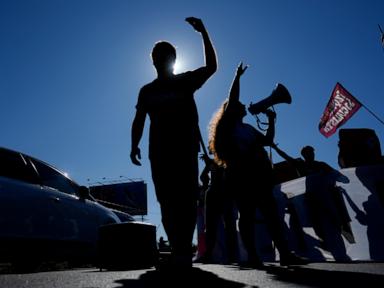Why the public dismisses Biden’s legislative accomplishments

When Joe Biden became president in 2021, one of the first things he did was hang a portrait of Franklin Delano Roosevelt above the Oval Office fireplace. This was the first clue about how he planned to govern after the Democrats gained control of both houses of Congress.
Soon after, Biden won passage of the American Rescue Plan, which contained $1.9 billion of assistance to families and businesses from the COVID-19 pandemic. He then unveiled the next phase of his agenda, the American Jobs Plan, which called for federal spending of $2.1 trillion to expand public infrastructure, green energy and other projects. This was to be followed by another $2 trillion program of social programs designed to build “human infrastructure.”
My assessment at the time was that Biden’s agenda was “Too Big and Too Bold.” I maintained it needed to be pared down and split into separate bills to have a better chance of passage. Subsequently, a $550 billion infrastructure bill was enacted, followed by the $280 billion Chips and Science Act. Biden’s legislative achievements culminated with the passage of the Inflation Reduction Act in August of 2022.
The total price tag of these bills over a decade totaled $1.6 trillion, $550 billion of which came in the form of tax credits. The remaining amount authorized federal spending of more than $1 trillion on items such as highways, greenhouse gas reduction and semiconductor manufacturing.
Following the Inflation Reduction Act’s passage, White House press secretary Karine Jean-Pierre boasted that Biden had “more legislative success than any modern president.” The administration’s plan was to get this message out to voters before the November midterm elections.
However, polling since then has repeatedly shown that the American public is not enamored with Bidenomics.
One reason is that the Inflation Reduction Act was passed just as inflation spiked to a four-decade high. Voters were fixated on paying soaring grocery bills, gasoline prices and housing costs. Republicans mocked the bill’s title as a misnomer because it added to a federal debt burden that already was on an unsustainable trajectory.
Beyond this, Biden’s programs also suffered from inadequate messaging due to a lack of transparency and accountability. Although the White House gave occasional updates about them, it did not provide a centralized way for the public to see how much had been formally awarded or spent.
To get at this issue, a team of researchers at Politico spent months assessing the implementation of the laws that make up the backbone of Biden’s legacy. Last April, they found that less than 17 percent of the $1.1 trillion authorized for direct investments in climate, energy and infrastructure had actually been spent.
The administration announced roughly $60 billion in tentative funding out of $145 billion in direct spending on energy and climate programs in the act. Only $125 billion had been spent from the $884 billion provided by the infrastructure laws and from pandemic relief, and roughly $300 billion is not authorized until the next two fiscal years.
What lessons should we draw from all of this?
My take is that Biden’s legislation has not been received well received principally because the American public does not see direct benefits. When the federal government embarks on long-term investment projects, it needs to keep the public informed on the progress on a regular basis.
The federal government must also be accountable for whether these programs achieve their stated objectives. There has been considerable slippage in this regard since the early 1960s, when Secretary of Defense Robert McNamara implemented Planning, Programming, Budgeting and Execution as a framework for military leaders to decide which programs to fund based on strategic objectives. This process was ultimately adopted by the Bureau of the Budget and various federal agencies.
One criticism of McNamara’s approach is that such procedures typically cost billions of dollars, take years to complete and follow a traditional model of research and development.
The Defense Advanced Research Project Agency, which has the best track record of various industrial policies, is often cited as the role model for proactive government. It is credited with launching numerous successful innovations including the development of the internet, GPS and Apple’s personal assistant Siri, among others.
The agency was created by President Eisenhower in 1957 to maintain U.S. military superiority following the Soviet Union’s launch of Sputnik, and other federal departments have strived to emulate its success.
Another lesson is that public investment does not necessarily displace private investment.
One of the Politico research findings was that the Inflation Reduction Act unleashed a gusher of private company investments in clean energy and manufacturing by way of tax breaks worth at least $525 billion.
Goldman Sachs contends the act will spur a third energy revolution in which about $3 trillion in renewable energy technology could double the volume of energy produced by the shale revolution. Accordingly, the best chance of success is for government programs to target areas where its sponsorship creates incentives for the private sector to innovate.
Finally, what should Kamala Harris do differently Joe Biden if she becomes president?
My take is that federal programs targeted with specific objectives have a better chance of being accepted by the public than ones that are massive and difficult to discern. Harris has grasped this by advocating government programs directly targeting the middle class.
For this reason, I believe she needs to distance herself from Biden’s economic programs to gain political acceptance for her programs.
Nicholas Sargen, Ph.D. is an economic consultant for Fort Washington Investment Advisors and is affiliated with the University of Virginia’s Darden School of Business. He has authored three books including” Investing in the Trump Era: How Economic Policies Impact Financial Markets.”
Topics
-

Which Biden administration accomplishments could be undone by Trump?
Top stories - NBC News - 5 days ago -

Here's why Argentina's public universities are paralyzed by protests
World - ABC News - October 31 -
House GOP lays out legislative priorities: Border wall, tax cuts, cutting Biden programs
Politics - Politico - Yesterday -
Why Biden apologized to Native Americans
Top stories - CBS News - October 25 -

Why Biden's 2020 win ultimately helped Trump
Politics - The Hill - November 11 -
Gisele Pelicot on why she wanted her husband's rape trial open to public
Top stories - CBS News - October 23 -

Why people with disabilities in Nairobi are looking beyond public transport to navigate busy city
World - ABC News - November 8 -

Why a Key Biden Effort to Boost Affordable Housing Has Faced Hurdles
Business - The New York Times - October 28 -
Voters who helped Biden win in 2020 share why they will not vote for Harris
Top stories - CBS News - October 29
More from The Hill
-

Who will stand up to Trump’s unqualified nominees?
Politics - The Hill - 40 minutes ago -

Russia fired ICBM at Ukraine, Kyiv says
Politics - The Hill - 40 minutes ago -

Which major retailers will be closed for Thanksgiving this year?
Politics - The Hill - 45 minutes ago -

International Criminal Court issues arrest warrants for Netanyahu, Hamas leader
Politics - The Hill - 45 minutes ago -

US charges Gautam Adani, one of world's richest people, with fraud
Politics - The Hill - 1 hour ago